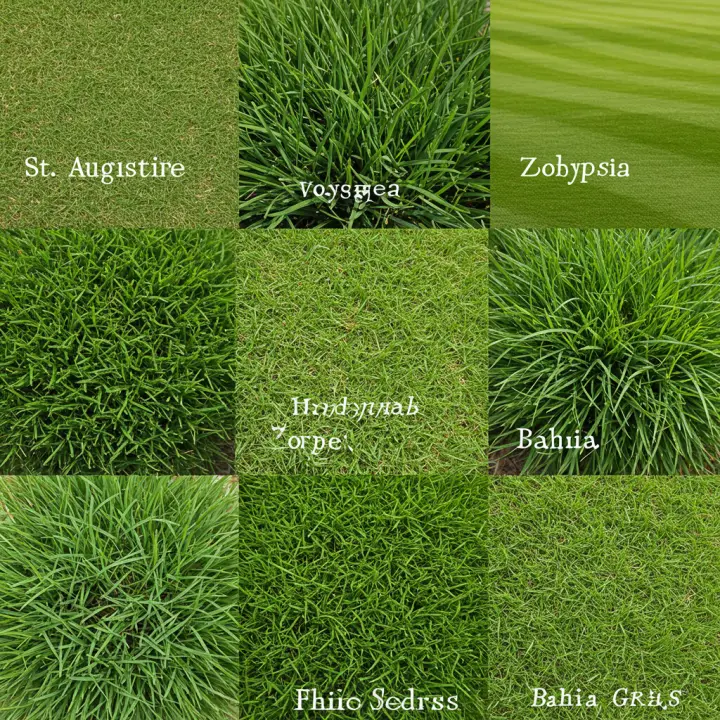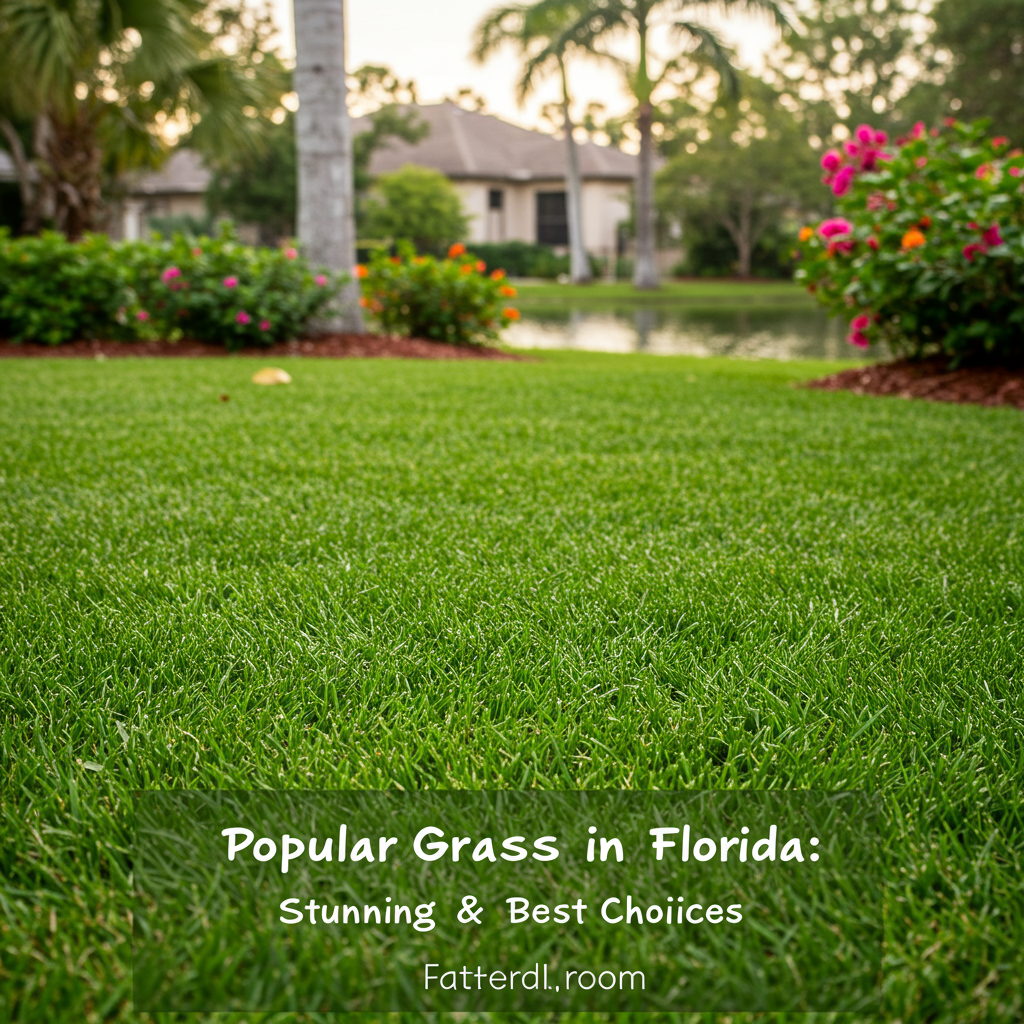While there are several great options, the single most popular grass in Florida is St. Augustine due to its excellent heat tolerance and ability to thrive in the state’s humid, subtropical climate. However, the best grass truly depends on your specific location, soil, and lifestyle.
Creating a lush, green lawn in Florida is a dream for many homeowners, but the state’s unique climate—with its intense sun, high humidity, and sandy soil—presents a real challenge. Unlike other regions where one or two grass types dominate, Florida requires a more thoughtful approach. Choosing the right turfgrass is the single most important step to achieving a beautiful and sustainable yard.
This guide will walk you through the most popular grass types in Florida, helping you understand the pros and cons of each so you can make the perfect choice for your home.
Why Choosing the Right Grass for Florida is Crucial
Florida’s environment is tough on turf. From the cooler winters of the Panhandle to the tropical heat of South Florida, a one-size-fits-all solution simply doesn’t exist. Key factors that make grass selection so critical include:
- Intense Heat & Humidity: Grass needs to be able to withstand long, hot summers without browning out.
- Drought & Salinity: Many areas experience watering restrictions and, if you’re near the coast, salt spray is a major consideration.
- Pests & Diseases: The warm, moist climate is a breeding ground for pests like chinch bugs and diseases like brown patch fungus.
- Varied Soil: Florida’s soil is often sandy and low in nutrients, requiring grasses that can adapt.
Selecting a grass that is naturally suited to your conditions will save you immense time, money, and frustration in the long run.
The Most Popular Grasses in Florida: A Detailed Breakdown

While St. Augustine often takes the top spot, several other varieties are extremely popular for their unique strengths.
St. Augustine Grass: The Sunshine State’s Favorite
St. Augustine is the quintessential Florida grass. Its broad, blue-green blades form a dense, carpet-like lawn that has become the standard in many suburban neighborhoods.
- Pros:
- Excellent Shade Tolerance: The most shade-tolerant of the warm-season grasses.
- Thrives in Heat: Loves the hot and humid Florida climate.
- Good Salt Tolerance: A great choice for coastal properties.
- Establishes Quickly: Spreads via above-ground runners (stolons) to fill in bare spots.
- Cons:
- High Water Needs: It is not drought-tolerant and requires consistent irrigation.
- Pest Prone: Highly susceptible to chinch bugs, a common and destructive pest.
- Low Cold Tolerance: Can be damaged by hard frosts, making it less ideal for North Florida.
- Poor Wear Tolerance: Does not hold up well to heavy foot traffic.
Best For: Homeowners in Central and South Florida who want a lush, classic lawn and have some shade.
Zoysia Grass: The Luxurious, Barefoot-Friendly Choice
Zoysia is a premium turf known for its fine texture, extreme density, and soft feel. It creates a stunning, high-end look and is gaining popularity across the state.
- Pros:
- Excellent Drought Tolerance: Once established, its deep root system makes it very water-efficient.
- Great Wear Resistance: Its dense growth habit allows it to handle foot traffic well.
- Good Shade Tolerance: Better than Bermuda and Bahia, though not quite as good as St. Augustine.
- Chokes Out Weeds: Its density leaves little room for weeds to grow.
- Cons:
- Slow Growing: Takes longer to establish and recover from damage.
- Can Develop Thatch: Requires periodic dethatching to stay healthy.
- Higher Initial Cost: Sod and plugs are typically more expensive.
Best For: Homeowners who prioritize a soft, manicured look and have a good mix of sun and partial shade.
Bahia Grass: The Low-Maintenance Workhorse
Originally introduced for pastureland, Bahia grass has become a staple for Florida lawns due to its incredible resilience and minimal demands.
- Pros:
- Exceptional Drought & Heat Tolerance: Can survive extended dry periods by going dormant.
- Low Maintenance: Requires less water, fertilizer, and overall attention than other grasses.
- Pest & Disease Resistant: Naturally tough against most common lawn problems.
- Great for Poor Soil: Thrives in Florida’s sandy, acidic soil where other grasses struggle.
- Cons:
- Coarse Texture: Not as soft or dense as St. Augustine or Zoysia.
- Forms Tall Seed Heads: Produces distinctive “Y-shaped” seed heads that require frequent mowing.
- Open Growth Habit: Can be more susceptible to weeds if not maintained properly.
Best For: Large properties, roadsides, and homeowners who want a durable, low-effort lawn without needing a perfect “golf course” look.
Bermuda Grass: The Full-Sun, High-Traffic Champion
If you have a yard with relentless sun and lots of activity, Bermuda grass is your go-to. It’s what you see on most golf courses and athletic fields for a reason.
- Pros:
- Superior Wear Resistance: Recovers from damage and heavy traffic faster than any other grass.
- Excellent Drought Tolerance: Deep roots make it very hardy in dry conditions.
- Thrives in Full Sun: It requires at least 6-8 hours of direct sun to look its best.
- Good Salt Tolerance: Works well in coastal regions.
- Cons:
- No Shade Tolerance: Will quickly thin out and die in shady areas.
- Aggressive Spreader: Can be invasive and creep into garden beds if not properly edged.
- High Maintenance: Requires frequent mowing, fertilizing, and watering to maintain its appearance.
Best For: Homes with full-sun yards, active families with kids and pets, or anyone wanting a lawn that can take a beating.
Centipede Grass: The “Lazy Man’s” Grass
Often called the “lazy man’s grass,” Centipede is a slow-growing, low-maintenance turf that is particularly popular in North and Central Florida.
- Pros:
- Very Low Maintenance: Needs minimal fertilization and less frequent mowing.
- Good for Acidic Soil: Prefers the type of soil found throughout the Florida Panhandle.
- Fair Shade Tolerance: Handles moderate shade well.
- Cons:
- Poor Traffic Tolerance: Does not recover well from wear and tear.
- Slow Growth: Can take a long time to fill in bare patches.
- Sensitive to High pH: Does not like alkaline soil, which is common in coastal South Florida.
Best For: Homeowners in North and Central Florida looking for the absolute easiest lawn to care for.
Key Factors to Consider for Your Florida Lawn
Before you decide, grade your yard against these four critical factors:
- Region (North, Central, or South Florida): North Florida is more suited to cold-hardy varieties like Centipede and some Zoysias. South Florida is perfect for St. Augustine. Central Florida is a transition zone where most types can grow.
- Sun Exposure vs. Shade: Carefully track how many hours of direct sun your lawn gets. This is the most crucial factor. A full-sun yard rules out St. Augustine, while a shady yard eliminates Bermuda.
- Foot Traffic and Durability: Be realistic about how you use your lawn. Do you have pets and children who play outside daily? If so, Bermuda or Zoysia is a better bet than St. Augustine.
- Desired Maintenance Level: How much time and money are you willing to invest? If the answer is “not much,” Bahia or Centipede is your answer. If you enjoy lawn care as a hobby, you might prefer the lush results of a well-maintained St. Augustine or Zoysia.
Frequently Asked Questions (FAQs)
What is the easiest grass to maintain in Florida?
Bahia grass is widely considered the easiest and most low-maintenance grass for Florida. It is extremely drought-tolerant, pest-resistant, and requires little fertilization.
What is the most shade-tolerant grass for Florida?
St. Augustine, particularly cultivars like ‘Floratam’ and ‘Seville’, is the most shade-tolerant warm-season grass available and the best choice for lawns with significant tree cover.
What is the most drought-tolerant grass in Florida?
Bahia and Zoysia are the two most drought-tolerant grasses for Florida lawns. Once established, their deep root systems allow them to survive long periods without supplemental watering.
Can I mix different (Note: MAX_TOKENS) grass types in my Florida lawn?
It is generally not recommended. Different grasses

